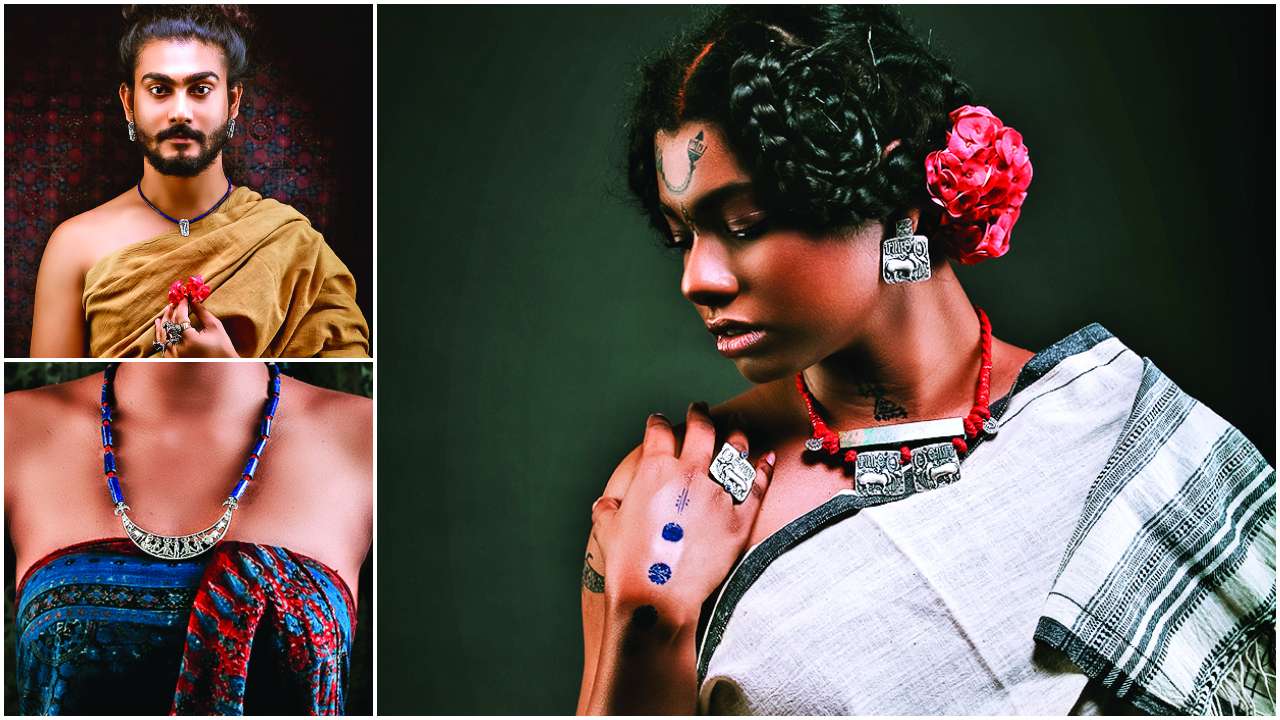
On her first visit to Delhi's National Museum in July 2016, Mumbai-based self-taught jewellery designer Geetanjali Gondhale became so smitten by the excavated button seals, figurines, animal statues, anthropomorphic forms, terracotta pottery, and neckpieces of the Indus Valley Civilization (IVC) on display that she decided to fashion a line of jewellery as an ode to the Harappans right away.
She turned to her long-time collaborator, indologist Dr Saili Palande-Datar of Heritage Insights – a Pune-based archaeological consulting firm. Palande-Datar had researched for Gondhale's Goa silver jewellery line to arrive at the right designs for its native torans, beads, fishes and wildlife. For the Harappa line as well, she pored over unearthed finds of the Bronze Age civilization that flourished along river Indus on numerous sites in India and Pakistan, while Gondhale interpreted these findings artistically. They even examined hoards from world museum collections and archaeological documentation and even did a recce of the major Harappan site, Lothal.
To stay true to the taste of the Harappans, they avoided overtly ornate designs, nose pins and amulets. No pink, white, black and purple hues either; but lots of blues and reds, using lapis lazuli sourced from Afghanistan and carnelian from Kambhat.
Gondhale also learnt that the shellac bangles you see on the left arm of the iconic dancing girl from Mohenjo-daro is what commoners wore. "The elite were crazy about the long and slender tubular beads that tapered on both ends."
To produce these beads, they involved Anwar Sheikh Hussain, national awardee and sixth generation bead cutter based in Kambhat near Lothal. Hussain is adept at creating the long beads – found during the Harappan era in India, Mesopotamia and Egypt – from carnelian, agate and bandied agate, and jasper, using the similar manufacturing techniques as the Harappans. "Anwar demonstrates for workshops and research conferences of Heritage Insights," says Palande-Datar. "We discovered that he is the only artisan who can make these tubular beads that were in vogue during Harappan times. He can even create them from carnelian, a fairly brittle stone." Most of the production work takes place at Gondhale's studio in Thane, after which the jewellery is sent for the finishing touches to an artisan studio in Jaipur.
'Harappa' from Moha now encompasses rings, earrings, pendants and neckpieces from sterling silver in antique finish bearing archetypal motifs of the civilization in 2D, studded with or strung with semi precious stones of agate, faience, carnelian and lapis lazuli. Moreover, these motifs are assigned Indianised names: the virile humped bull seal is called vrishubh, the Pashupati or proto Shiva seal becomes mahisha, the dancing girl is Sindhu naari, and the stubbornly undecipherable IVC script – Harappa bhasha. Although attractive, yet slightly off the subject is the design of twin fishes set in the ying and yang formation. The costliest in the collection, however, is the Mehula necklace, that encloses the mahisha, vrishubh and Sindhu naari in a crescent moon pendant, which dangles from a string of long lapiz lazuli beads.
Even the model who poses in these IVC pieces was chosen because she didn't sport contemporary features – a lean figure and well plucked brows – but is "timelessly Harappan with a raw, dusky complexion which I found much closer to nature," Gondhale says. Fashion designer Saurav Das, furthered the Indian sensibilities by draping the model in Ajrakh and Shibori print textiles made from vegetable dyes.
Palande-Datar is confident about Moha's Harappa collection because "the interest about the IVC civilization is still high. Many new discoveries are being made even today. Few chariots and a coffin with skeletons wearing a diadem were recently excavated."
We will let that rest.